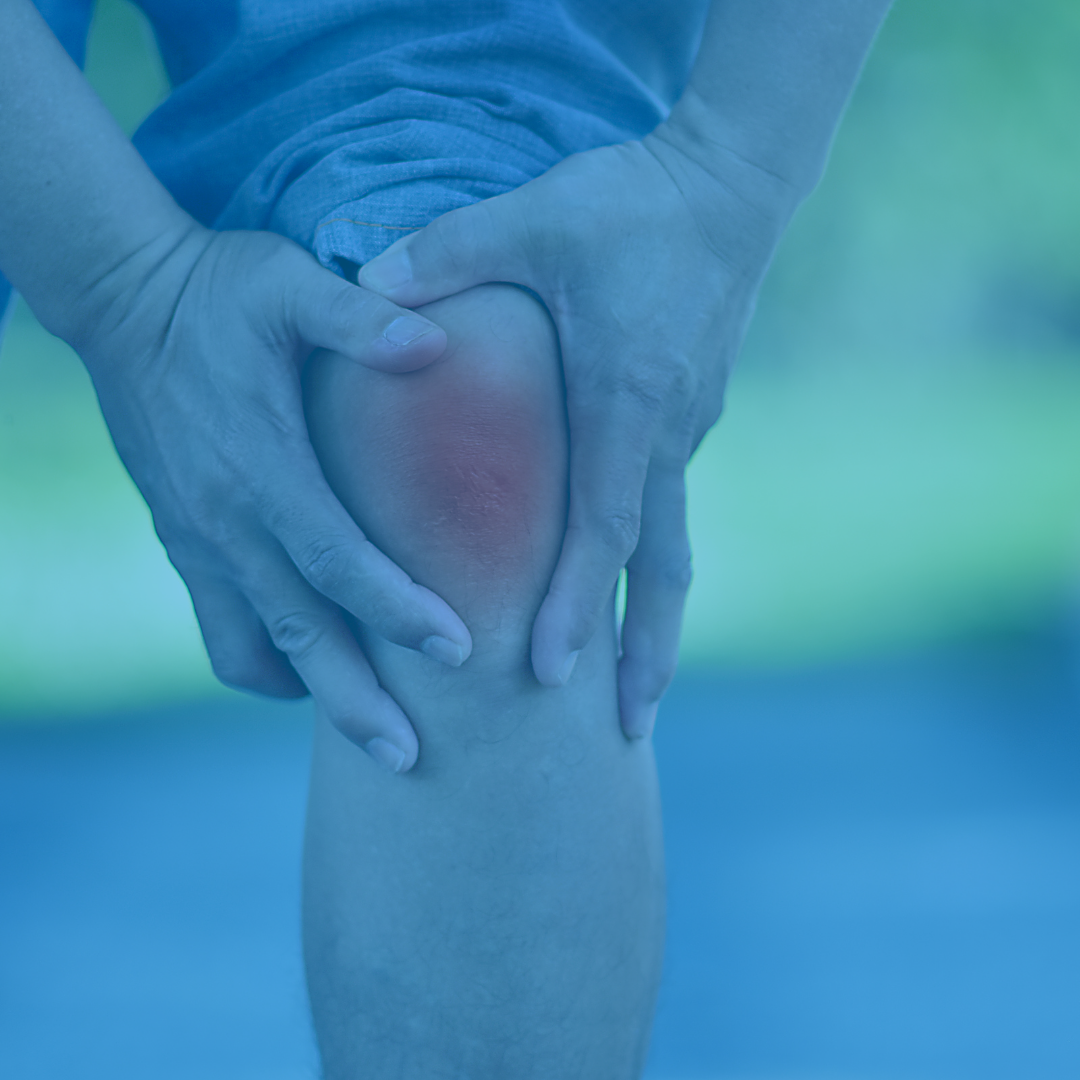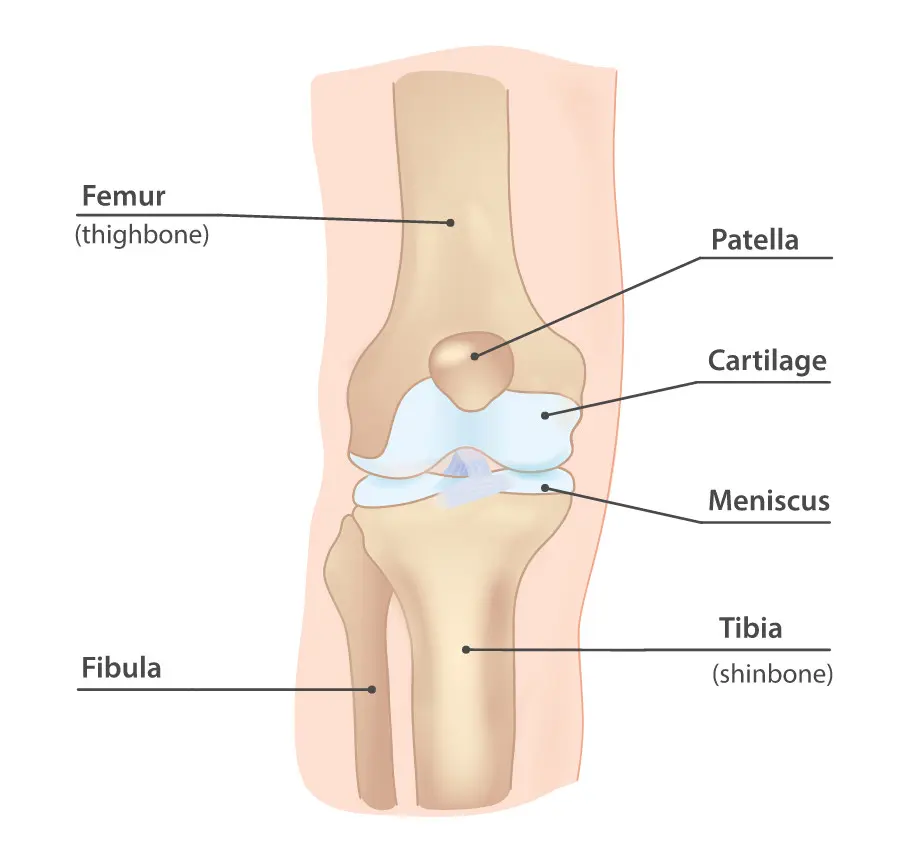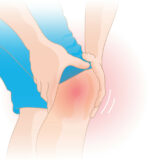
What is Patellofemoral Pain Syndrome?
Patellofemoral pain syndrome or in other words anterior knee pain is one of the most seen knee pathologies encountered by orthopedic and sports physiotherapists. It’s even said that around 25% of people will experience patellofemoral symptoms at some point in their life. But what is patellofemoral pain syndrome exactly? Where does it come from? How can I get rid of it? In this blog post we will try to shed more light on this very common knee pain problem.
What is patellofemoral pain
If we translate the diagnosis patellofemoral pain, it means pain caused by a problem between the patella, the kneecap and the femur, the thigh bone. And most of the time, it means the kneecap gets irritated while moving up and done over the thigh bone. If we take a look at the anatomy of the knee joint, there is a slight gutter where the kneecap can slide over. Sometimes, the way people load their knee joint can lead to irritation as the patella doesn’t move smoothly up and down the gutter of the femur. This can be due to mechanical alignment but also due to a wrong approach to training/load management. Many times it’s the result of predisposing factors (lack of strength, stability, psychosocial factors) and doing too much too quickly without adequate rest. If we had to paint you a picture of the typical patient with the condition it would be a young female that recently picked up running as a hobby and enthusiastically started jogging multiple times per week without a structured running program that gradually builds up in intensity and training volume.

Where do you feel the pain?
When do we classify knee pain as patellofemoral pain? Where should you feel the pain? If we take a look at the location of the pain, patellofemoral pain or anterior knee pain is felt at the front of the knee, and behind or at the sides of the kneecap.The pain is most of the time really diffuse or hard to localize. It is triggered through activities like walking stairs, cycling up a hill or getting up out of a squat position. So activities that compress the kneecap to the knee joint will probably evoke the pain.
How do we assess it?
We mentioned that approximately 25% of the people will experience patellofemoral pain at some point in their life. So you would think, with this high percentage of people experiencing patellofemoral pain, it would be easy to assess and help those with knee pain. However, management of patellofemoral pain syndrome is a little bit more complicated than you would think. While research has pointed out interventions that can help, we don’t have the answer as to what the optimal treatment is.
How is that possible you ask? Well, the problem is that there are just a lot of factors associated with patellofemoral pain. Factors like different tissues in the knee that can cause the pain, but also the fact that people with patellofemoral pain have more nerve fibres in their knee joint are factors that are associated with patellofemoral pain syndrome. But these aren’t treatable for us, so we shouldn’t focus on these factors.
What should we focus on?
What we should be focussing on are the factors we can treat and have control over. Studies found that a lack of hamstring length, but also hip strength and core muscle control could be factors that can cause predispose someone to suffer from patellofemoral pain syndrome. But physiotherapists also tend to believe that flat feet or knees caving inwards while walking are associated with patellofemoral pain. However, we also see those factors in people that don’t develop anterior knee pain, which is why the correlation remains inconclusive. But it is important to look at these factors during the physical assessment as they may be contributing to your painful knee. They may weigh in more in some than in others. Ultimately it comes down to forming a broad picture of possible contributors.
How do you treat it?
Just like any condition there is no one size fits all approach. But when we see a patient with anterior knee pain we believe to be patellofemoral pain syndrome a big part of the intervention will be education on proper load management. Like we said in the introduction: oftentimes it’s the result of doing too much too soon without being able to cope with the loads and without giving the body adequate time to rest.
But we don’t want to leave you hanging. There is good scientific evidence that strengthening the hip joint muscles and muscles around the knee can help in alleviating symptoms. We have made a structured rehab program for patellofemoral pain syndrome that covers these aspects in detail and could be a good starting point for you in case you are currently suffering from anterior knee pain.






8 comments
หวย
20/11/2020 at 02:38
Hi there, its fastidious article on the topic of media print,
we all know media is a enormous source of facts.
HjqtygpeD
22/11/2020 at 08:51
XoDezFZGgaCwVpOA
cheap silicone wristbands free shipping
24/11/2020 at 10:36
Great delivery. Great arguments. Keep up the amazing work.
http://www.pdf-exam.com/MB2-707.html
26/11/2020 at 15:55
It is in point of fact a great and helpful piece of information. I am satisfied that you simply shared this helpful info with us.
Please stay us informed like this. Thank you for sharing.
หวย
02/12/2020 at 03:39
I am extremely impressed with your writing skills and also with the layout on your blog.
Is this a paid theme or did you customize it yourself?
Either way keep up the excellent quality writing, it is rare to see a great blog like this one nowadays.
หวย
02/12/2020 at 07:46
WOW just what I was looking for. Came here by searching for หวย
หวย
02/12/2020 at 22:43
I visit daily a few web sites and blogs to read articles, but this webpage gives feature based writing.
silicone bracelets IT
10/12/2020 at 14:07
Everything is very open with a precise explanation of the challenges.
It was really informative. Your site is extremely helpful.
Thanks for sharing!
Comments are closed.